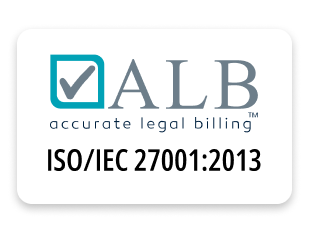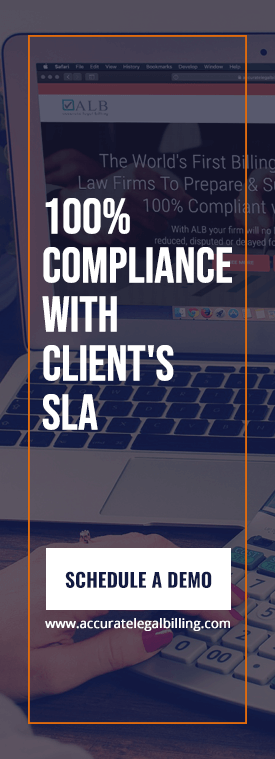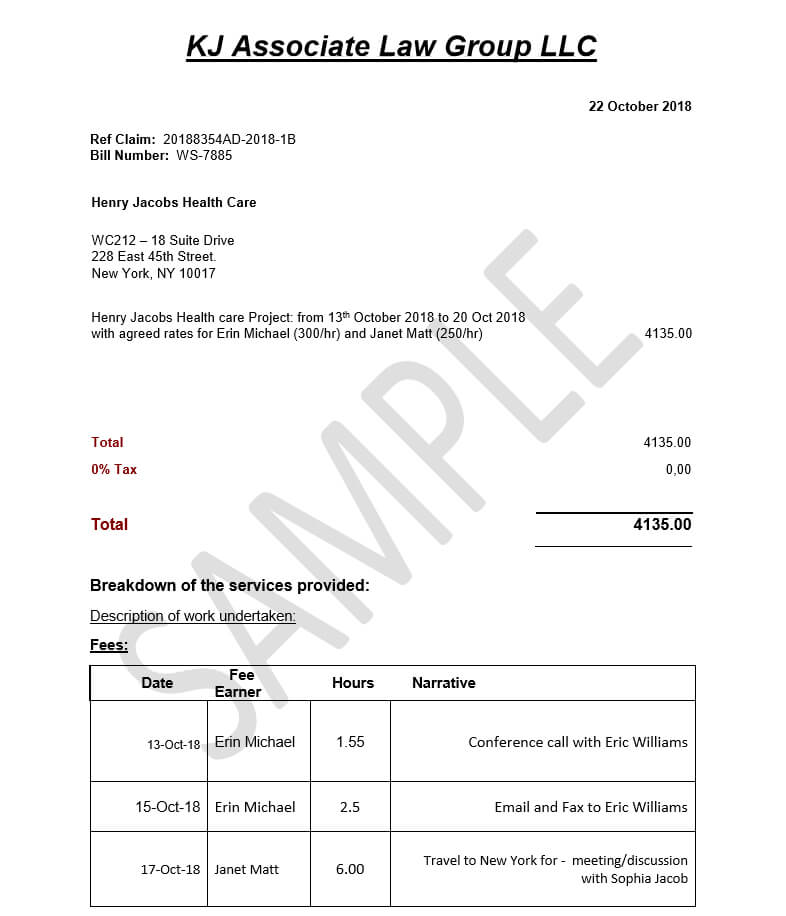
The Impact of Predictive Analytics on Legal Billing and Financial Forecasting
Predictive analytics has become one of the most impactful tools in the evolution of modern law practice. More than a passing trend, it now plays a central role in how law firms manage billing structures and forecast financial performance. Through the power of historical data analysis, machine learning models, and advanced algorithms, legal professionals are now able to make more accurate predictions about outcomes, costs, and revenues.
In this blog, we will examine how predictive analytics in the legal sector supports accurate billing, smarter pricing strategies, improved financial planning, and enhanced client relationships. We’ll also touch on practical applications, common risks, and how firms can responsibly adopt these tools to drive long-term growth.
What is Predictive Analytics in the Legal Sector?
To begin, it is essential to understand what predictive analytics is and how it is important for law firms.
Predictive analytics involves analyzing large volumes of past data to forecast likely future scenarios. This is achieved by applying statistical techniques, machine learning algorithms, and data mining strategies to identify patterns or correlations that would otherwise remain hidden.
In the context of legal services, this means using data from previous matters such as billing histories, case outcomes, client behaviors, and internal firm metrics to make informed projections about future activities. For example:
• Estimating how long a case might take based on its complexity
• Predicting which types of matters are most likely to result in payment delays
• Identifying clients who frequently challenge invoices
The reason predictive analytics is important for law firms is that it provides a structured, evidence-based approach to decision-making. Rather than relying solely on instinct or experience, law firms can now support their choices with quantifiable data.
For example, a law firm handling commercial disputes can use past case data to estimate case duration and likely settlement ranges. A billing team can use data from previous clients to identify those who tend to pay late or challenge charges.
The ABA TechReport found that 42% of firms using predictive analytics report improved client satisfaction due to better billing transparency and accuracy. This leads to better planning, reduced risk, and a more efficient allocation of time and resources.
What Is the Role of Predictive Analytics in Legal Billing?
Legal billing is often one of the most sensitive aspects of law firm-client relationships. Traditional billing methods, particularly the billable hour, can lead to disputes, misunderstandings, and dissatisfaction on both sides. But the use of legal billing analytics can help overcome these challenges by providing clearer expectations and smarter processes.
Predictive analytics for legal firms offer several billing-related benefits. A few of them are:
• Accurate Cost Estimation for Legal Matters
Using data from previous similar cases, predictive analytics helps generate more realistic cost estimates at the beginning of a new matter. This provides clarity for clients and reduces tension at the invoice stage. Firms are able to tell a client with greater certainty what a litigation process might cost based on variables like case complexity, jurisdiction, and document volume.
• Invoice Optimization Through Legal Billing Analytics
Legal billing software equipped with AI and predictive features can scan invoices for inconsistencies, time-entry anomalies, and inefficient task logs. This helps law firms issue invoices that are clearer and better justified. According to a 2024 ALA survey, firms using invoice analytics reduced write-downs by an average of 22%, largely due to fewer errors and better internal reviews.
Innovative platforms such as Accurate Legal Billing (ALB) are at the forefront of applying predictive analytics in everyday law firm operations. These platforms help law firms run through time entries automatically to ensure compliance with client billing guidelines and leverage predictive indicators to better manage billing behavior. By doing so, firms can avoid leaving anything to chance in billing accuracy and lay the groundwork for smarter financial planning.
• Smarter Pricing for Alternative Fee Arrangements (AFAs)
As more firms move away from hourly billing, AFAs like flat fees or success-based pricing become more common. Predictive analytics is essential here—it helps firms estimate the time and resources a matter will require and price services in a way that balances client value with firm profitability.
• Customized Billing Based on Client Payment Behavior
Predictive models can track client billing patterns and flag potential delays or disputes. For example, if a client has a history of slow payments on certain types of matters, the firm can adjust payment terms or invoicing cadence accordingly. This level of customization helps protect firm revenue while also improving the client experience.
Thus, AI in legal billing is not about removing the human element from billing decisions, it’s about enhancing accuracy, consistency, and transparency using objective data.
Financial Forecasting: Shaping the Future of Firm Strategy
Legal financial forecasting is another critical area where predictive analytics is creating substantial value. Law firms, like any business, must plan in terms of revenue, expenses, staffing, and growth. However, legal services are often unpredictable due to client behaviors, shifting regulatory environments, or variations in case load.
AI-powered predictive analytics in financial forecasting addresses these uncertainties by modeling financial performance across different variables and timeframes. The following are a few instances:
• Revenue Projections
Predictive models can estimate monthly, quarterly, or annual revenue based on past billing patterns, practice area performance, and client histories. This is particularly useful for budgeting and board-level financial planning.
• Cash Flow Management
Accurate forecasts help identify periods where cash flow may be tight, prompting firms to adjust payment terms, delay expenses, or secure financing in advance.
• Expense Planning
Firms can use historical cost data to predict upcoming operational costs such as payroll, technology investments, or litigation expenses.
• Profitability Monitoring
With ongoing access to real-time financial metrics, firms can quickly spot underperforming practice areas, loss-making clients, or inefficiencies that reduce profit margins.
Together, these capabilities make law firm revenue forecasting not only possible but practical. The result is a firm that can scale with confidence, respond swiftly to market shifts, and maintain healthy margins through informed planning.
How to Become a Data-Driven Law Firm Through AI and Legal Tech
The broader movement toward a data-driven law firm is being fueled by innovations in legal tech, particularly the integration of artificial intelligence into core business functions. Predictive analytics is one of the most impactful tools in this toolkit.
Consider the following practical applications of AI legal case prediction:
• Outcome Estimation: Firms can assess the likelihood of winning or losing a case based on factors such as judge history, opposing counsel, jurisdiction, and claim type.
• Settlement Modeling: Predictive tools can identify whether settlement is advisable based on prior similar cases and cost-benefit analyses.
• Resource Allocation: Cases can be categorized by predicted difficulty or time requirement, allowing managers to assign staff more efficiently.
Beyond litigation, AI-driven platforms also contribute to legal tech financial planning, where budgeting tools, pricing engines, and forecasting dashboards all connect to provide a unified financial view.
The net effect is improved decision-making at every level of the firm, from managing partners to associates. In this model, data informs action, and technology supports, not replaces, strategic thinking.
Challenges, Risks, and Ethical Considerations
While the promise of predictive analytics is significant, law firms must also navigate several challenges as they adopt these tools:
• Data Integrity and Security: Predictive models are only as reliable as the data they are built on. Incomplete, outdated, or biased data can lead to flawed predictions. Moreover, law firms must take great care to protect sensitive client and case data when using any analytics tools.
• Overreliance on Automation: There is a risk of deferring too much decision-making to algorithms. While predictive tools are powerful, they should always serve as aides to human judgment, not replacements for legal expertise.
• Transparency and Explainability: When predictive tools are used to determine billing or case strategy, clients may reasonably ask, “How was this decision made?” Firms need to be able to explain how analytics influenced their recommendations.
Understanding and addressing these issues is essential to maintaining client trust, upholding professional standards, and ensuring ethical technology use within legal practice.
The Future of Law Firm Profitability and Strategic Growth
Looking ahead, it is clear that predictive analytics in legal tech will play a defining role in how law firms achieve and maintain profitability. With more accurate financial projections, smarter billing strategies, and clearer visibility into case dynamics, firms can adapt more rapidly to economic pressures and client demands.
Importantly, AI-powered predictive tools support the move toward alternative fee arrangements, which many clients now prefer over traditional billing. These pricing models reward efficiency and transparency, two outcomes that predictive analytics helps deliver. Also, by enabling better law firm revenue forecasting, firms can plan their growth strategies with greater precision and reduced risk.
In the current arena, predictive analytics is definitely a way to build stronger systems, smarter teams, and more sustainable practices. If you would like to explore how predictive analytics can be applied to your firm’s billing processes, financial modeling, or pricing strategy, now is a good time to start that conversation. For more details, connect with us now.

.png)



